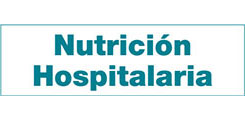Trabajo Original
ROC curves of obesity indicators have a predictive value for children hypertension aged 7-17 years
 Número de descargas:
52325
Número de descargas:
52325
 Número de visitas:
5048
Número de visitas:
5048
 Citas:
0
Citas:
0
Compártelo:
Objective: The aim of the study is to examine the distribution of integrated covariate and its association with blood pressure (BP) among children in Anhui province, China, and assess the predictive value of integrated covariate to children hypertension. Methods: A total of 2,828 subjects (1,588 male and 1,240 female) aged 7-17 years participated in this study. Height, weight, waistline, hipline and BP of all subjects were measured, obesity and overweight were defined by an international standard, specifying the measurement, the reference population, and the age and sex specific cut off points. High BP status was defined as systolic blood pressure (SBP) and/or diastolic blood pressure (DBP) ≥ 95th percentile for age and gender. Results: Our results revealed that the prevalence of children hypertension was 11.03%, the SBP and DBP of obesity group were significantly higher than that of normal group. Anthropometric obesity indices such as body mass index (BMI) were positively correlated with SBP and DBP. Integrated covariate had a better performance than the single covariate in the receiver-operating characteristic (ROC) curve, the cut-off value; the sensitivity and the specificity of the integrated covariate were 0.112, 0.577, 0.683, respectively. Conclusion: Integrated covariate is a simple and effective anthropometric index to identify childhood hypertension.
Palabras Clave: Childhood hypertension. Obesity receiver-operating characteristic (ROC) curve.
Artículos más populares
Revisión: Inteligencia artificial generativa ChatGPT en nutrición clínica: avances y desafíos
ChatGPT y otras herramientas de inteligencia artif...
Revisión: Suplementación con micronutrientes y sus beneficios: ¿por qué y cuándo?
Introducción: los micronutrientes participan en la...
-
Licencia creative commons: Open Access bajo la licencia Creative Commons 4.0 CC BY-NC-SA
https://creativecommons.org/licenses/by-nc-sa/4.0/legalcode




